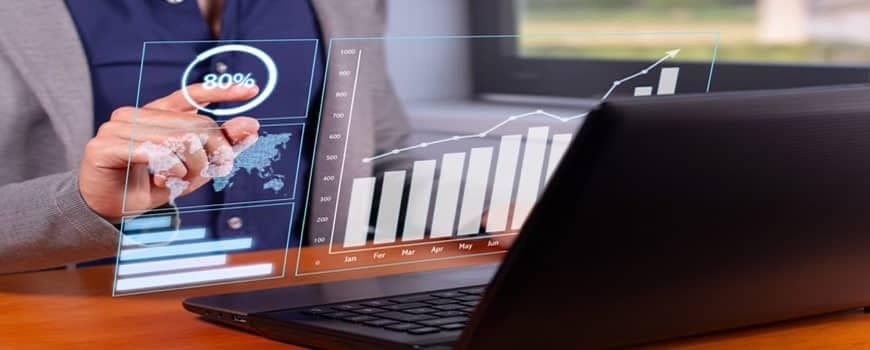How Business Process Intelligence (BPI) delivers value for Digital Transformation Initiatives
11 August 2022


Sandeep Kumar
VP - Business Consulting & Value RealizationSandeep Kumar is Vice President, Business Consulting & Value Realization at Applexus. With over 25 years of experience in consumer industries and consulting, Sandeep owns a...

Rohit Gupta
Lead ConsultantRohit is a lead consultant at Appelxus with strong expertise in process improvement projects with 11+ years of experience. Rohit has acquired significant expertise in Supply...
Abstract
In the post-pandemic world, enterprises are even more aware of the importance of continuously evolving their capabilities and being nimble in doing so to maintain their competitive edge. To achieve the twin goals of business transformation on an ongoing basis and faster time to action requires organizations to have a deep understanding of their current processes and optimization opportunities.
Business Process Intelligence (BPI) enabled by SAP Signavio provides the ability to analyze business operations, processes, and customer interactions to identify simplification and optimization opportunities. The faster time to insights enables faster time to action, as well as faster time to value in business transformations and process excellence initiatives.
In this blog, we will explain what BPI is, the capabilities of SAP Signavio and how this enables business transformation on a continuous basis.
BPI in a snapshot

The term Business Process Intelligence (BPI) is used in different ways. It is often used as a synonym for process mining as per Professor van der Aalst, widely credited for coining the term Process mining. As per Gartner, Process Mining Includes
- automated process discovery (i.e., extracting process models from an event log),
- conformance checking (i.e., monitoring deviations by comparing model and log),
- social network/organizational mining,
- automated construction of simulation models, model extension, model repair, case prediction, and history-based recommendations.
However, as per our understanding, BPI is an all-encompassing solution that leverages concepts of process mining, process modeling, process automation, and benchmarking to identify process improvement, simplification, and automation opportunities.
Typically, BPI solutions combine process analytics and data mining to assist organizations in extracting granular level process execution data from their systems of records. This allows organizations to visualize their processes, which, in turn, enables management teams to make the right decisions about current processes and implement better business strategies.
BPI Solutions by SAP Signavio
Multiple BPI solutions co-exist in the market today such as SAP Signavio, Celonis, Aris, BizAgi etc. SAP Signavio brings together all the tools needed for the analysis of business process performance combined with the enterprise software that is used for enabling and reengineering business processes, in a single solution suite. The key components of SAP Signavio are -

SAP Signavio Process Insights
Businesses can secure instant value with SAP Process Insights – plug-and-play solution, business process Deep-Dive with advanced analytics, as well as benefit from 50+ delivered process flows and 900+ typical inefficiencies.

SAP Signavio Process Intelligence
With SAP Signavio Process Intelligence, you have the possibility to visualize your process reality: From running detailed process analysis for business transformations (S/4HANA integrations included), investigating and interacting with business data to leveraging process mining for fact-based changes in order to uncover the hidden value in business processes and data.

SAP Signavio Process Manager
This helps you to completely reimagine your business processes, collaboratively scale the process repository of your enterprise as well as to simulate business processes in order to define alternative business scenarios.


SAP Signavio Journey Modeler
Use Journey Modeler to deliver customer excellence through the design of customer journey models for touchpoint improvements, alignment of business processes to customer experiences as well as sharing customer-centric journeys for feedback and potential experience improvements.
![]()
SAP Signavio Process Governance
Process Governance supports in gaining complete visibility and governance over your workflows, developing prototypes for rapid deployment, and scaling up workflows without coding.

SAP Signavio Process Automation
SAP Process Automation solution is an AI-powered, intuitive, and no-code solution for workflow management and robotic process automation (RPA). With visual drag-and-drop tools and prebuilt, industry-specific content, it is possible to simplify business process automation, improve process efficiency, and enhance business agility.

SAP Signavio Process Collaboration Hub
With SAP Signavio Process Collaboration Hub, you can collaborate and work together in your own way by building a single source of truth across all teams, breaking down business silos and shaping an improved understanding of KPIs, tasks, and projects.
Case in Example: Order to Cash (O2C) Optimization
O2C process is responsible for order acquisition, order execution, order delivery, and revenue recognition in any organization. It touches multiple functions, ranging from commercial and sales to finance, legal, and customer support. Thereby cross-functional alignment is critical to fully understanding what is happening in the O2C process.
Analysis of the Order to Cash process of a manufacturer uncovered consistent patterns of errors and rework, revenue leakage, customer-experience pain points, and a number of variants that each sub-processes had. The tool provided insights that previously had been impractical to achieve because of data limitations. This has been explained in the diagram below.

Using BPI to transform your business
BPI can be leveraged on a variety of initiatives to secure the success of your business transformation and process improvement initiatives.

On a transformation initiative, usage of BPI can provide early insights about areas of complexities, process redundancies, where SAP Standard might be a good fit, and where to expect deviations from SAP capabilities. This will not only improve the quality of solution design but will also ensure that client leadership has a clear line of sight about how the unique process steps in their business are being addressed as well as optimization of unnecessary or redundant process steps. This will help in ensuring organization alignment around new solution design, realizing business value as well as improved adoption of the solution. For a typical transformation program, the diagram below shows the BPI activities and expected outcomes during each phase of the program.

Diagram - BPI aligns with SAP ACTIVATE and Applexus RunningStart methodology
On Continuous Improvement initiatives, BPI enables the identification of process simplification, optimization, and automation opportunities. This insight coupled with value-based decision making ensures that the focus is on the right priorities.
Using Applexus Value Assurance Framework, we will establish a comprehensive list of activities aligned with each phase of the program to realize full business value, for example, we will identify key metrics that will be impacted by these initiatives and measure the changes in the baseline value and target value of these metrics to calculate the tangible business value that organization should expect from these initiatives. This framework will also ensure that the required value governance structure is integrated with the overall program governance framework to assign the right responsibilities, communication mechanism, and way to address any potential roadblock.
Conclusion
With the changing consumer needs, ever-present competitive threats, and challenging macroeconomic conditions, organizations are expected to continuously improve their processes and be very nimble in doing so. The amount of data that most organizations have today, the number of systems and entities involved in executing a process do not make the task of understanding the current processes and identifying suitable improvement opportunities easier.
This is where BPI can help organizations in driving a uniform understanding of the process, quickly identify optimization opportunities and prioritize high-value change initiatives. Applexus with its expertise in BPI and SAP applications can not only help you identify these high-impact change initiatives but can also help you implement these changes to drive competitive advantage for your business.












